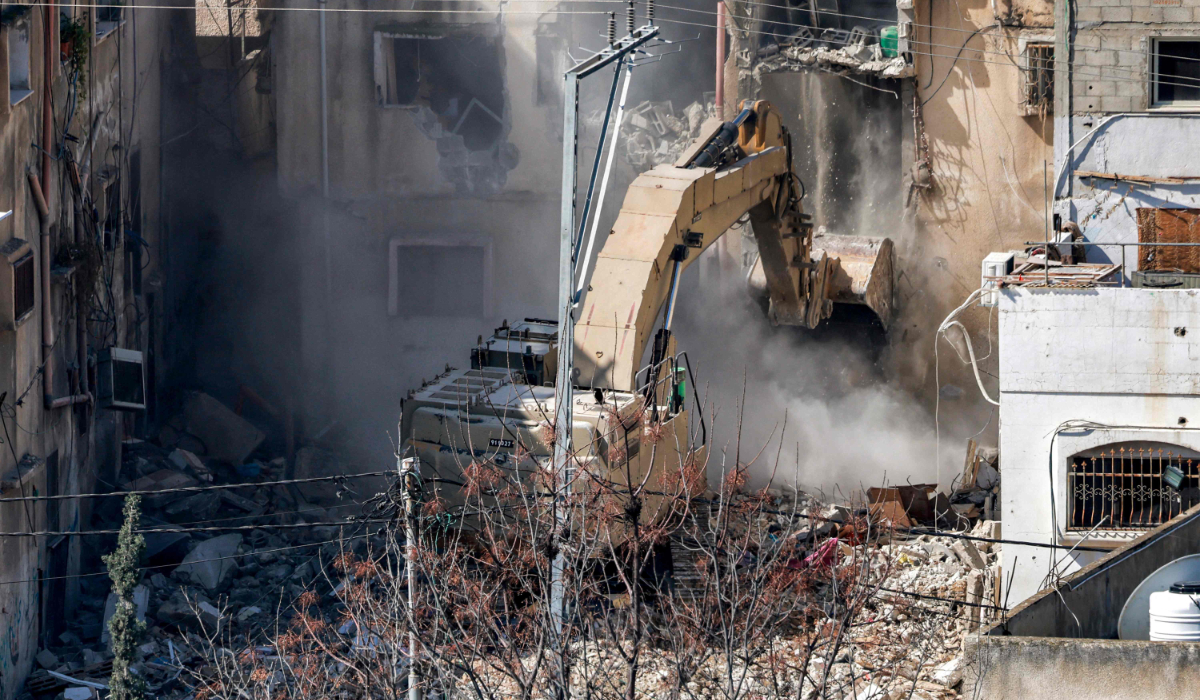TEL AVIV: A long-range Iranian-made drone hit the center of Tel Aviv in the early hours of Friday in an attack claimed by the Yemen-based Houthi militia that killed one man and wounded four others, the Israeli military and emergency services said.
The explosion, which footage shared on social media suggested came from the sea and did not trigger air raid alarms, occurred hours after the Israeli military confirmed it had killed a senior commander of the Iran-backed Hezbollah militia in southern Lebanon.
Chief spokesperson Rear Admiral Daniel Hagari said the military assessed that the drone, which hit a building near the beachfront close to US Embassy premises in Tel Aviv, was an upgraded Iranian-made Samad-3 model.
“Our estimation is that it arrived from Yemen to Tel Aviv,” he told a press briefing.
A spokesman for the Houthis, which like Hezbollah are aligned with Iran, said the group had attacked Tel Aviv with a drone and would continue to target Israel in solidarity with Palestinians in the Gaza war.
The attack, which took place ahead of a visit to Washington by Prime Minister Benjamin Netanyahu next week, is likely to fan fears about further fallout from the Gaza war as the Houthis and other Iranian proxies side with the Palestinian militant group Hamas.
Defense Minister Yoav Gallant met military commanders to review air defenses and said the country had to be ready for all scenarios. “We must be prepared for defensive and offensive actions,” he said, according to a statement from his office.
An Israeli official said the military was still investigating why the drone did not trigger the alarm, but initial reports suggested the aircraft was identified but the sirens were not sounded due to human error.
“We’re talking about a large UAV (Unmanned Aerial Vehicle) that can fly large distances,” the military official told journalists after the strike.
The military said air patrols had been increased to protect Israeli airspace but said it had not ordered new civil defense measures. The mayor of Tel Aviv said the city, Israel’s economic center, had been moved to a state of heightened alert.
In the hours following Friday’s attack, sirens sounded repeatedly in areas close to the border with Lebanon and Israeli air defenses intercepted at least one aerial target that crossed into Israel.
“Operation achieved its goals”
Houthi spokesperson Yahya Saree called Tel Aviv a primary target “within the range of our weapons.”
He said the strike was carried out using a new drone called “Yafa,” which he said was capable of bypassing interception systems and undetectable by radars.
“The operation has achieved its goals successfully,” Saree said in a televised speech.
Israel’s emergency services said the body of a 50 year-old man was found in an apartment close to the explosion and four people were taken to hospital with slight shrapnel injuries. Four others were treated for shock. All of them were later released, health services said.
Israel has been exchanging daily missile and artillery fire with Hezbollah along its northern border and in southern Lebanon since the start of the war in Gaza, prompting fears of a wider regional conflict if the situation escalates.
The Houthis have also stepped up attacks against Israel and Western targets, saying they are acting in solidarity with the Palestinians, after Israel invaded the Gaza Strip following last year’s attack by Hamas militants on southern Israel.
Hamas-led fighters stormed Israeli towns on Oct. 7, killing around 1,200 people and taking more than 250 hostages back to Gaza, according to Israeli tallies. Since then, nearly 39,000 Palestinians have been killed in Israel’s assault on the Gaza Strip, according to health authorities in the enclave.





























